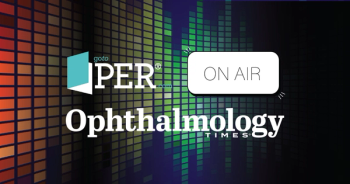
AAO 2024: Injectable endothelial cell therapy shows promise for improving vision and reducing glare in corneal edema
Key Takeaways
- Injectable endothelial cell therapy improves visual acuity and glare in corneal edema, showing promise as an alternative to DMEK.
- Clinical trials in El Salvador demonstrated consistent improvements in best-corrected visual acuity and brightness acuity testing over one year.
Matt Giegengack, MD, explains how injectable corneal endothelial cell therapy can enhance visual acuity and alleviate glare, offering a versatile alternative to current treatments like DMEK.
Injectable human corneal endothelial cell therapy shows promise in improving both visual acuity and glare associated with corneal edema, according to Matt Giegengack, MD, who presented findings from two clinical trials at the American Academy of Ophthalmology 2024 annual meeting, held October 18 to 21 in Chicago, Illinois.
Giegengack, a cornea specialist at Wake Forest University School of Medicine in Winston-Salem, North Carolina, discussed data from clinical trials in El Salvador, where patients underwent best-corrected visual acuity (BCVA) and brightness acuity testing (BAT) over one year. The results indicated consistent improvements in both metrics, with BCVA and BAT advancing in parallel, suggesting that endothelial cell therapy effectively addresses not only visual acuity issues but also bothersome glare.
He explained that the lowered threshold for surgical intervention in corneal endothelial disease is often driven by glare, which is currently best treated with Descemet membrane endothelial keratoplasty (DMEK). While DMEK remains the gold standard for conditions like Fuchs dystrophy, Giegengack highlighted limitations in its applicability, particularly for patients with unstable lenses or certain glaucoma procedures. "Endothelial cell therapy is going to be a treatment that you can do on anybody that has corneal edema," he said, emphasizing the therapy’s potential to expand treatment options.
However, he acknowledged that some El Salvadorian patients presented with more severe disease and other ocular conditions that would have precluded DMEK, potentially confounding the results. To address these limitations, a US clinical trial is under way, focusing on patients with milder disease and fewer confounders. Giegengack expressed optimism that the US trial will validate the findings and further demonstrate the therapy’s versatility for treating all patients who currently undergo DMEK.
Newsletter
Don’t miss out—get Ophthalmology Times updates on the latest clinical advancements and expert interviews, straight to your inbox.








































